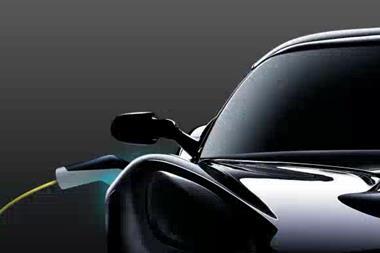
How can tier suppliers deliver a fast and efficient project? According to SSAB a close partnership with a material supplier and early involvement is the key to success
Today, the competition in the automotive industry is driving the need for efficiency more than ever. As a result, OEMs are in continual search of ways to optimise and be more efficient. When it comes to their relationship with tier suppliers, this means taking such measures as contracting more parts made from multiple materials – and ratcheting up the time constraints and pressure.
While this fast pace is the key to success, it can sometimes result in problems. For example, when a project is delayed because a tier supplier or the OEM is not sure if a material is approved.
So, how can tier suppliers deliver quicker, more cost-effectively and more efficiently than in the past? How can they ensure the smoothest project and the best possible outcome? The answer, in large part, lies in the partnership with a material supplier.
Close collaboration
Achieving efficiency is a two-way street where the relationship between tier suppliers and the material supplier has to be a close one. According to Arnaud Guerendel, head of global automotive at SSAB, there are three main requirements: increasing material knowledge, access to trial materials and early involvement of suppliers in the development or approval process.
Better material knowledge
“To begin with, OEMs and tiers must have material knowledge,” explains Guerendel. “This will allow them to really ensure that they are getting the most out of the material grade that they choose, while knowing how to process it correctly.”
There are a lot of modern materials out there, like advanced high strength steel (AHSS) for example, as well as future materials like third generation steel. Being fully informed about different grades, properties and performance will allow for the full potential of the materials to be utilised. Through an integrated process with the supplier there will be many ways to stay informed.
“In our case at SSAB, we feel that our over 30 years of experience working with AHSS for the automotive industry should be shared with tier suppliers and OEMs. This is in order to promote innovative automotive components and the quickest development process. To do it, we provide a wide range of in-house seminars and webinars about our Docol Automotive Steel grades, our new third generation steel, as well as design, function, implementation and engineering services that assists with tooling and manufacturing,” says Guerendel.
Trials and deliveries
“The second key to increasing efficiency is to ensure that the material supplier can deliver trials and material on time and according to the contract set,” adds Guerendel.
Receiving the right trial material early in the development phase is a crucial factor that can shorten the time to market. However, the wait for material that can be properly tested is often a long one, with high costs due to hurdles like minimum orders. Access to a dedicated trial material stock helps tier suppliers and OEMs reduce costs and speed up their R&D by helping them quickly find the right material.
“We realise that for a customer to really get the most out of high strength steel they have to fully validate the material – to test our steel before they put it into real production,” adds Guerendel. “Our solution is the SSAB Trial Material Stock at our steel service centre in Sweden where we can quickly deliver trial materials exactly as requested – from an A4 size piece of steel, to sheets, slits and full size coils.”
Early involvement
According to Guerendel, the third, and maybe most important factor of all for increasing efficiency in the development of a component or an approval is including the material supplier earlier in the process.
“Smooth interactions and collaboration early in the process will inspire trust and set the stage for a good working relationship,” says Guerendel. “Early involvement also helps to build material knowledge, solve many technical challenges that may arise and contributes to a more cost-efficient outcome.”
An active choice
Fulfilling these criteria is often easier said than done. Tier suppliers and OEMs should not only be offered the right range of material for a specific automotive component, but also be supplied with the services and tools that allow for quicker actions and decisions.
The key is actively taking steps to partner with the right supplier – one who provides the right education, access to trial materials and possibilities for joint development projects with a high level of transparency from the beginning. Doing so will ensure a real solid plan for cutting costs, improving efficiency and being more competitive in today’s demanding automotive environment.
Docol noticeSSAB is now introducing third generation steel products ready for customer trials. Metal coated Docol 600 DH and Docol 800 DH are available now, and more grades will be available soon. These trip assisted dual-phase steel grades provide improved formability and good weldability, for ease of use with conventional equipment and lower production costs. They also offer benefits like:• A good combination of strength and ductility• Better usability compared to second generation AHSS• Properties for forming more complex shapes• A cost-effective alternative to aluminium and hot forming• High ductility for crash performance.








































